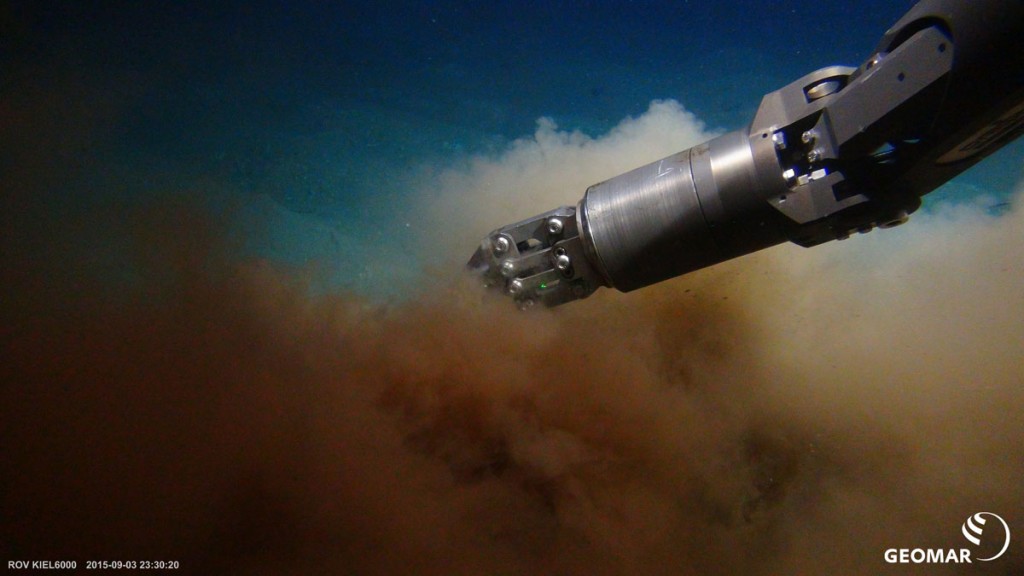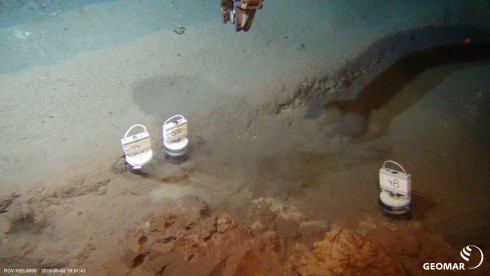In addition to a direct disturbance by an industrial collection of nodules at the seafloor, potential impacts of nodule mining are connected to the associated generation of sediment plumes and their dispersal. This may vastly extend the area that is affected by mining activities. Deep-sea sediments are typically very fine and easily eroded – it is impossible not to stir them up when doing any manipulations at the seafloor. This gets obvious when we do our investigations with the Remotely Operated Vehicle ‘KIEL 6000’ of GEOMAR. Whenever small sediment cores are taken from the sediment, or when organisms are gently collected with a scoop, we already create a sediment plume that often takes our sight for several minutes, until the sluggish deep-sea currents dilute the plume. Clearly, our scientific experiments are rather negligible in dimension and effect, in comparison to industrial activities of deep-sea resource exploitation. So it is an important question as to what effects sediment clouds would have that an industrial style nodule collector will create when moving along the seafloor!
Deep-sea ecosystems are not at all used to large quantities of particles floating in the water column and settling on the seafloor. Currents are typically quite slow and sediments just stay where they are. There are several potential effects of so called ‘sediment plumes’ that are created by human activities. Sensitive organisms living on the seafloor may suffer from being covered by sediments, clogging their feeding organs or burying them altogether. The blanket of fine sediments covering neighboring seafloor areas may change chemical conditions in the seafloor, potentially impacting fauna living in the sediments as well as microbially-driven processes (e.g., nutrient regeneration). Potentially, a decrease in bottom water oxygen concentration may occur, as well as a release of contaminants from suspended particles.
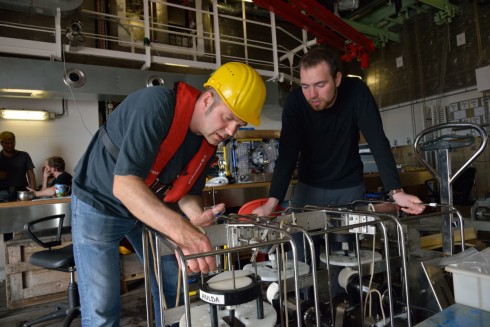
Felix Janssen and Tobias Vonnahme remove the filters from the In Situ Pumps after deployment (photo: Manfred Schulz TV & Film)
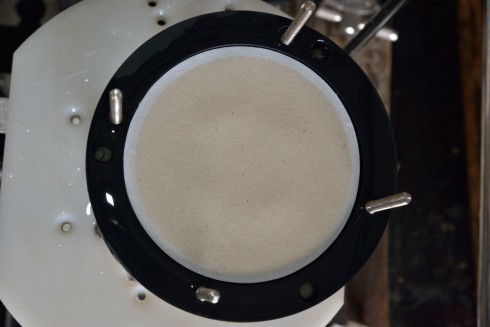
Several hundred liters of filtered bottom water leave visible traces on the filter of the In Situ Pump (photo: Manfred Schulz TV & Film)
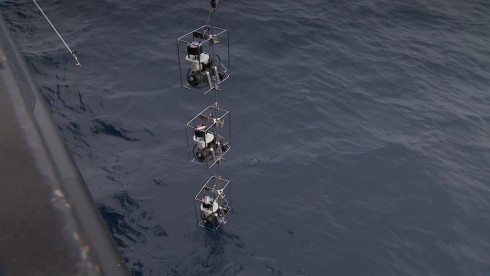
Three In Situ Pumps ready to get lowered to bottom waters at 4100 m water depth (photo: Manfred Schulz TV & Film)
With a group of colleagues from the AWI, the MPI, the Jacobs University in Bremen and the GEOMAR in Kiel we are currently carrying out investigations that focus on the small disturbances we create by our observation and sampling activities. We use these as a case study to investigate characteristics and fate of sediment plumes. Our main scientific questions are: How much sediment is released when disturbing the seafloor and where does it travel? How long do particles stay in suspension? Can we detect changes in bottom water oxygen or elevated contaminant levels? Using three so-called ‘In Situ Pumps’ we collect and survey sediment particle loads that our scientific activities discharge to the lowermost water column, and we compare them to the pristine background present before the scientific activities. The pumps are lowered to the lowermost water column for a period of a few hours to filter up to 1000 L of seawater – much more than you would obtain with standard oceanographic sampling equipment. After the deployment, the filters are removed from the pump and taken to the home lab for later analysis of the total amount of sediment, its composition (e.g., organic matter, metals), but also for microbial communities that are dispersed together with the sediment particles. A ‘background value’ was obtained by a first pump deployment on 30th of August ahead of any other station work – one week after our colleagues from the previous leg left the area. Every couple of days we now repeat the deployment at the position where our past activities where centered. In addition to the filter samples we use turbidity sensors on the ship’s own multi-parameter instrument (CTD), and by small autonomous recorders (‘MAPR’) that we attach to as many of our instruments as possible. Furthermore we address the short term evolution of sediment clouds. To do this, we follow fresh plumes with the Remotely Operated Vehicle while monitoring water column oxygen content and taking water samples for later filtration and analysis. An attempt to image the evolution of the plume with the vehicle from the outside will follow on one of the next days. Our observations will later be used by modelers within our project to improve and test plume dispersal models that are currently developed.
Felix Janssen, Tobias Vonnahme, Sophie Paul, Matthias Haeckel, Samuel Müller
